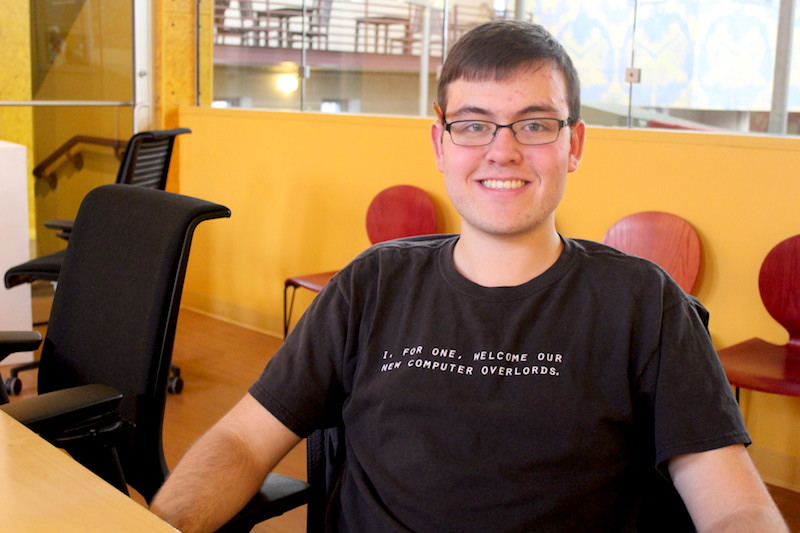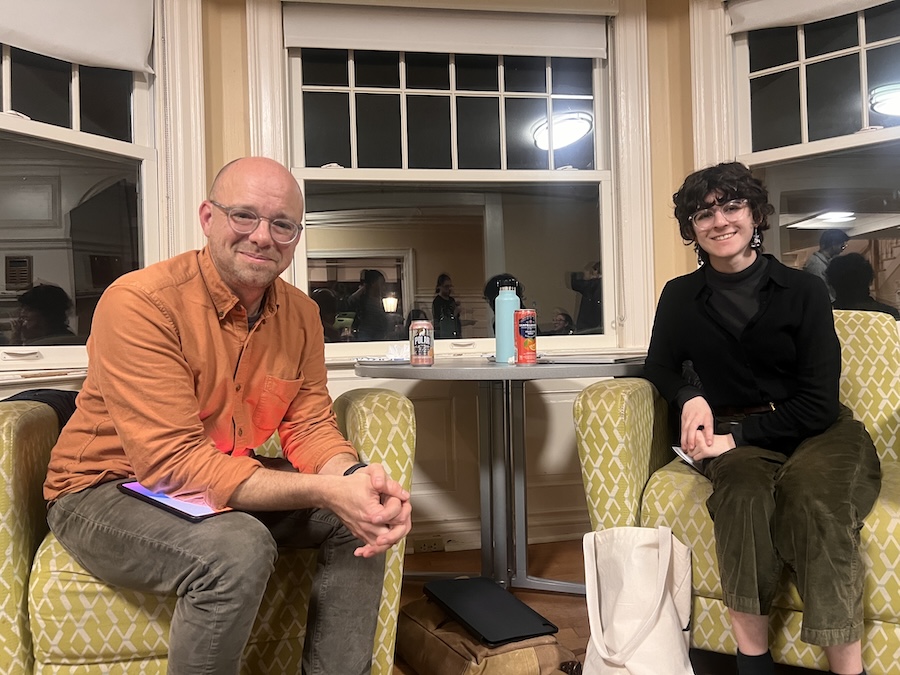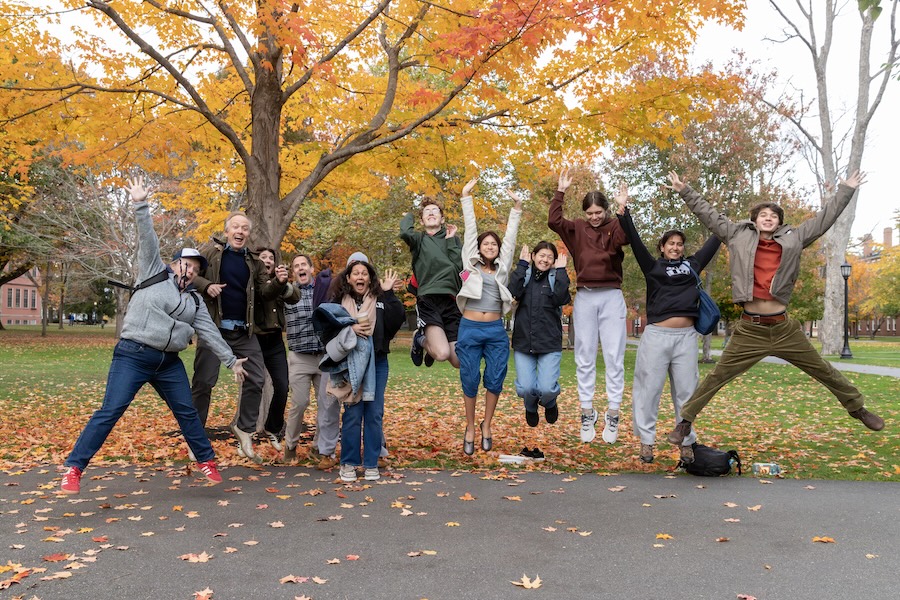Student Ben York's 'Autistic's Guide to Autism'
By Rebecca Goldfine
In his Bowdoin Orient column, “An Autistic’s Guide to Autism,” Ben York ’19 explains that it took him years of living with autism to understand that the “preferences and quirks” of his personality were not indications of a deficiency.
“Viewing and experiencing the world in a unique way is not a sign of disability,” he writes. “There is nothing wrong with the way my brain works, nothing wrong with the brain that so many millions were born with. Those brains are just different. Those people are different. And different is not bad.”
York grew up in Harpswell, Maine, about seven miles from campus. He said that soon after starting college this fall, he approached The Bowdoin Orient editors about writing a column for the student newspaper. While his greatest passion is math, he also enjoys writing essays and poetry, and he was looking for outlets to publish his writing. At first York was reluctant to tell the paper’s staff about his autism because he thought they wouldn’t be interested. They were, though, and they wanted him to write about it. So far, York has published four columns on several subjects, including why he thinks math is taught poorly in schools, the harmful effects of linking vaccines to autism, and what it’s like to idolize robots and aliens as a child.
The comments posted in response to York’s columns have been appreciative. One reader wrote, “Beautiful. Now we need more non-autistics to agree with us. I’m tired of us being seen as broken or wrong in some way, because OMG HE DOESNT MAKE EYE CONTACT or other stuff like that.”
Before arriving at Bowdoin, York had already started a public awareness campaign of sorts about what it is like to live with autism. In his senior year at Mt. Ararat High School in Topsham, he launched a capstone project that entailed him giving public lectures on autism. “I decided I would go around to school groups, parents groups and other groups to talk about what it was like being autistic,” he said. Up to now, he’s given five talks, to social workers, teachers, students and support staff at schools. “It’s my life,” he said, “it’s the easiest thing for me to talk about.”
By speaking up in this way, both through his columns and talks, York said he’s not only educating people about autism, but also doing his best to connect with other autistic people. In one of his columns he writes “…knowing that we are not alone in our experiences of the world has led an entire community of autistic people to spring up, both online and in real life. This sense of belonging was something that I experienced far too late, and so I try to share it with as many young autistic children as I can.”
York said it is easy for those with autism, particularly kids, to feel isolated. He didn’t meet another autistic person until he was 17, although since then he’s met many. At Bowdoin, he has met only one other. “Part of my presentation is to make sure other autistic children are not alone,” he said. “Throughout a lot of my childhood, I felt alone, I was very different.”
To help non-autistic people better understand him, York offers a quick explanation of how his brain works. “An autistic brain is built fundamentally different than people with neurotypical brains,” he said. “There is more synaptic connectivity in the autistic brain, which makes the subjective experience of the world more intense.” In essence, autistic people are greeted by an onslaught of stimuli, which can easily swamp them, particularly young children. Grappling with this mountain of sensory input overrides smaller everyday matters, such as the “mole hills” that are most social interactions, York explains.
When he was young and his mother would take him shopping at Wal-mart, York said, he would try to listen to every conversation happening around him. This would inevitably lead to him having meltdowns, where he crumpled to the floor, a wailing, frustrated and overstimulated kid.
But autistic children can learn to adapt, York said, particularly with help from therapists who can teach children to self-sooth when the unexpected happens, or who can enlighten them about inappropriate behaviors. His mother, a teacher at Brunswick Junior High, and his father, a customer service representative at L.L. Bean, have also been very supportive, he said. York described an early adaptation he and his mother came up with to get around his dislike of being held. When he was two and ailing from a terrible ear infection, and desiring comfort as he lay in his bed, he held out two fingers for his mom to grip.
He has also learned how to interpret sarcasm or idiomatic language and how to make eye contact. He picked up a trick for making eye contact after watching a NOVA special about dogs, which showed that dogs glean information about their owners’ state of mind by focusing on the owner’s right eye, because that is where humans express the majority of their emotions. Before that, “as a child, I used to focus on the nose, because I did not know where else to look,” York said.
Another of York’s coping mechanisms is to spend time by himself quietly processing his day and analyzing social interactions, both ones he has had and theoretical ones. “I run through social interactions in my head. I practice,” he explained. “I ask myself, ‘What if I said this, how would I react? I would react this way. So maybe I shouldn’t say that in this way to a person. What if I said it in this way? Oh, that has this meaning, this connotation.’ These conversations might not happen, but I have practiced every conceivable social situation that I can think of.”
In addition, York tends to avoids noisy, crowded spaces. He arrives at the dining hall as soon as it opens, when there is just a trickle of people. And he avoids most parties. York writes in his column, “the first time someone sees me at a College House party will be the day Hell freezes over.” At the dining hall, because he is averse to complex flavors, he sometimes requests special accommodations, such as being served the noodles of lasagna without the cheese, sauce and other additions. When there are many seasonings, ingredients and textures in a dish, he can’t eat it. So he sticks to plain dishes — hamburgers, grilled cheese sandwiches, bread with butter.
In some ways, perhaps, autism can be seen as limiting. But there are also gifts that come with having a “non-neurotypical” brain. From his early childhood, York developed obsessive interests and hobbies, starting with trucks, trains and dinosaurs and progressing to WW II, science and math. “Having interests with a capital I is very common among autistic individuals,” he said. “It’s often the lens through which you view the world. Because the world is a chaotic and confusing place, you find one thing you can burrow into and deeply understand.”
York also points out that it is easy for him to accept and connect with individuals other people might find baffling or be fearful of. “On a personal level, because I don’t adhere to many social conventions, I find it easier to interact with people others might find different,” he said.
And when he does make a bond with someone, that tie tends to be strong, leading to durable, lasting friendships. However, this trait might not be a side effect of autism. It’s hard to parse what comes from autism, and what is just a personality trait, he said. “That might just be me,” York mused.



